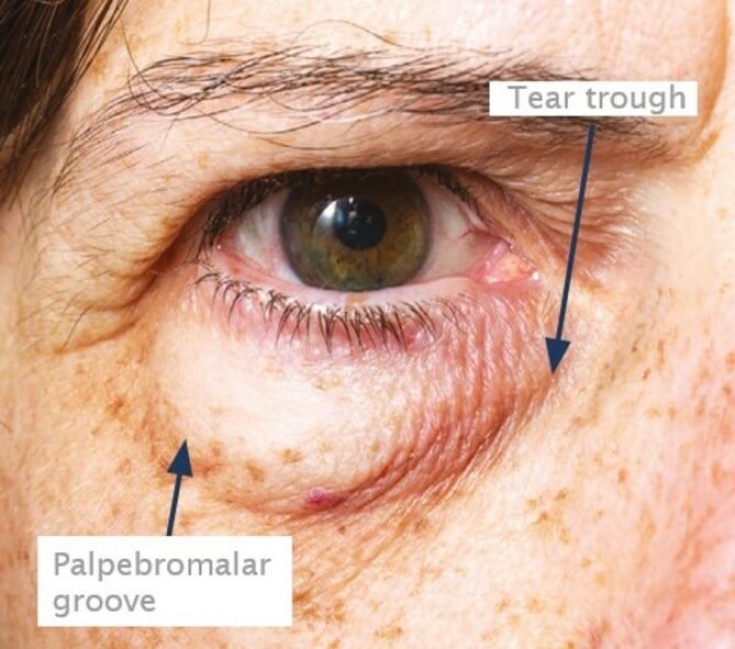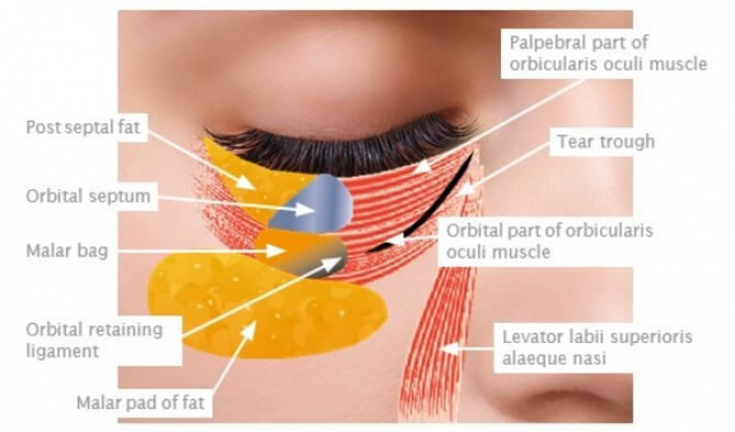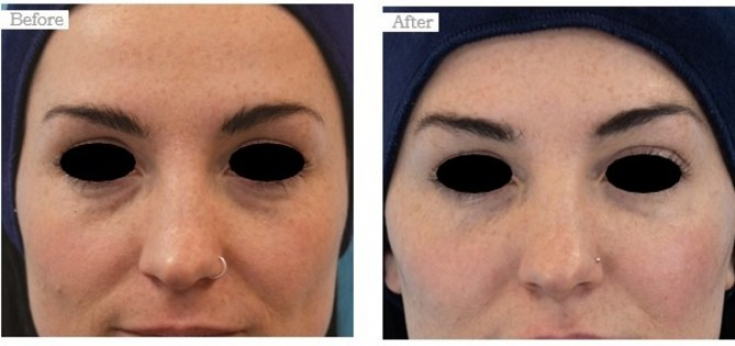The area under the eyes is often the target when working not only with older, but also with young patients. The deepening of the nasolacrimal sulcus, the appearance of shadows and dark circles in this area visually age the face and give it a tired look. To solve the above problems, aesthetic medicine specialists often inject fillers into the nasolacrimal trough. However, it is not so easy to get a good result of the correction of the delicate infraorbital zone.
In this estet-portal.com article, Dr. Jennifer Doyle provides recommendations that can be followed to optimize results when working with nasolacrimal sulcus with dermal fillers.
- Nasal tear trough: features and methods of correcting a defect in the area under the eyes
- How does the condition of the skin in the area under the eyes affect the severity of the nasolacrimal sulcus
- The influence of age-related changes in the middle third of the face on the severity of the nasolacrimal sulcus
- Choice of drug for correction of nasolacrimal troughss
Nasal tear trough: features and methods for correcting a defect in the area under the eyes
 Fig. 1 Ntearful and palperbomalarth furrows
Fig. 1 Ntearful and palperbomalarth furrows
The nasolacrimal sulcus is a depression located between the lower eyelid and the cheek.
Dermal fillers based on hyaluronic acid are usually used by cosmeticians to fill the furrow and soften the transition from the cheek to the lower eyelid.
From the point of view of aesthetic correction, this nasolacrimal sulcus is unique, since this defect can appear not only in older, but also in young patients, presumably due to heredity.
It is important for the esthetician to understand the advantages and limitations of each. Tear trough rejuvenation can be performed by various methods, including surgery, filler injections, and topical applications.
Rejuvenation of the eye area: possibilities and results of work with HA fillers
Dr. Doyle notes that the most important step for successful correction of the nasolacrimal trough – determine the cause of its occurrence.
At this stage, it is important to assess not only the morphology of the depression, but also the condition of the skin, as well as the degree of age-related changes in the middle third of the face.
It is equally important to choose the right product for correcting defectsta.
How does the condition of the skin in the area under the eyes affect the severity of the nasolacrimal trough
The skin in the periorbital region is very thin, almost transparent, and at the same time, in some patients it is prone to pigmentation. With age, degeneration of connective tissue components, such as elastin, is observed, which negatively affects skin tone. Such changes affect the nature of the stay of the filler in the tissues.
Darkening or hyperpigmentation of the skin under the eyes also makes the patient's face look more tired. Deepening of the nasolacrimal trough can result in shadowing, which is important to distinguish directly from darkening of the skin. To do this, it is necessary to examine the area in good light and from different angles.
The exceptional thinness of the skin under the eyes – the cause of the translucence of the vessels, therefore, in this area there is an increased likelihood of the Tyndall effect after the introduction of HA fillers.
 Fig. 2 Anatomy of the eye: Palpebral part of orbicularis oculi muscle – palpebral part of the orbicular muscle of the eye; Tear trough – nasolacrimal sulcus; Orbital part of orbicularis oculi muscle – orbital part of the circular muscle of the eye; Levator labii superioris alaeque nasi – muscle, elevating upper lip and wing of the nose; Post septal fat – postseptal fat; Orbital septum – orbital septum; Malar bag – Paint bag; Orbital retaining ligament – support orbital ligament; Malar pad of fat – paint fat sac.
Fig. 2 Anatomy of the eye: Palpebral part of orbicularis oculi muscle – palpebral part of the orbicular muscle of the eye; Tear trough – nasolacrimal sulcus; Orbital part of orbicularis oculi muscle – orbital part of the circular muscle of the eye; Levator labii superioris alaeque nasi – muscle, elevating upper lip and wing of the nose; Post septal fat – postseptal fat; Orbital septum – orbital septum; Malar bag – Paint bag; Orbital retaining ligament – support orbital ligament; Malar pad of fat – paint fat sac.
If the reason for the darkening of the area is the cast shadow, the problem can be corrected by injecting a filler into the nasolacrimal trough. In the case of hyperpigmentation, brightening agents with hydroquinone, arbutin and vitamin C in the composition will be more effective. Patients with hyperpigmentation are also advised to apply sunscreen with a broad spectrum of protection daily.
Tyndall effect: how to prevent a complication
The exceptional thinness of the skin under the eyes – the cause of the translucence of the vessels, therefore, in this area there is an increased likelihood of the Tyndall effect after the introduction of HA fillers.
With age, the skin loses elasticity, there is a decrease in the amount of elastin and collagen, which negatively affects the quality of the skin. Topical preparations such as retinoids as well as mechanical procedures such as microneedling, PRP can be used to increase it.
By improving the quality of the skin, it is possible to improve the result of the aesthetic correction of the nasolacrimal trough.
Excess skin and contouring of orbital fat can lead to bags under the eyes, which may require surgical blepharoplastya.
Follow us on Facebook!
The influence of age-related changes in the middle third of the face on the severity of the nasolacrimal sulcus
The degree of severity of the nasolacrimal sulcus may be affected by the loss of volume in the middle third of the face – from bone resorption to reduction of malar fat pads and weakening of zygomatic support.
Injection of highly cohesive volumizing fillers into the midface, as well as supraperiosteal bolus injections of drugs, can restore cheek support. Thus, we reduce the amount of filler required for direct correction of the nasolacrimal trough, and, accordingly, the risk of side effects associated with its introduction.
Case report: correction of the nasolacrimal trough with fillers GK
Choice of a drug for the correction of the nasolacrimal trough
The correct choice of filler for work with the nasolacrimal sulcus is very important due to the special delicacy and poor lymph flow in the infraorbital zone.
Doctor recommends less product given the water-binding capacity of hyaluronic acid.
Fillers with a high degree of cross-linking of HA are more hydrophilic and can lead to impaired lymph flow and, consequently, the appearance of edema after correction. For this reason, and to avoid the Tyndall effect, the doctor uses less hydrophilic fillers such as Teosyal Redensity II and Belotero Balance.
 Fig. 3 Ppatient before and after nasolacrimal trough correction filler Redensity II.
Fig. 3 Ppatient before and after nasolacrimal trough correction filler Redensity II.
. At the consultation stage, the author explains to the patient the reason for the insufficiently pronounced correction and notes that a few weeks after the procedure, the volume will increase due to the water associated with HA.
The most dangerous complications after hyaluronic acid injections and how to avoid them It is important to be aware of the
risk of intravascular administrationof the drug with subsequent vessel occlusion and, as a consequence, possible loss of vision, intracerebral damage and skin necrosis. Although such serious complications are rare, it is still better to use a cannula to insert the filler into the nasolacrimal trough to reduce the risk to the patient. Adapted from Aesthetics.







Add a comment